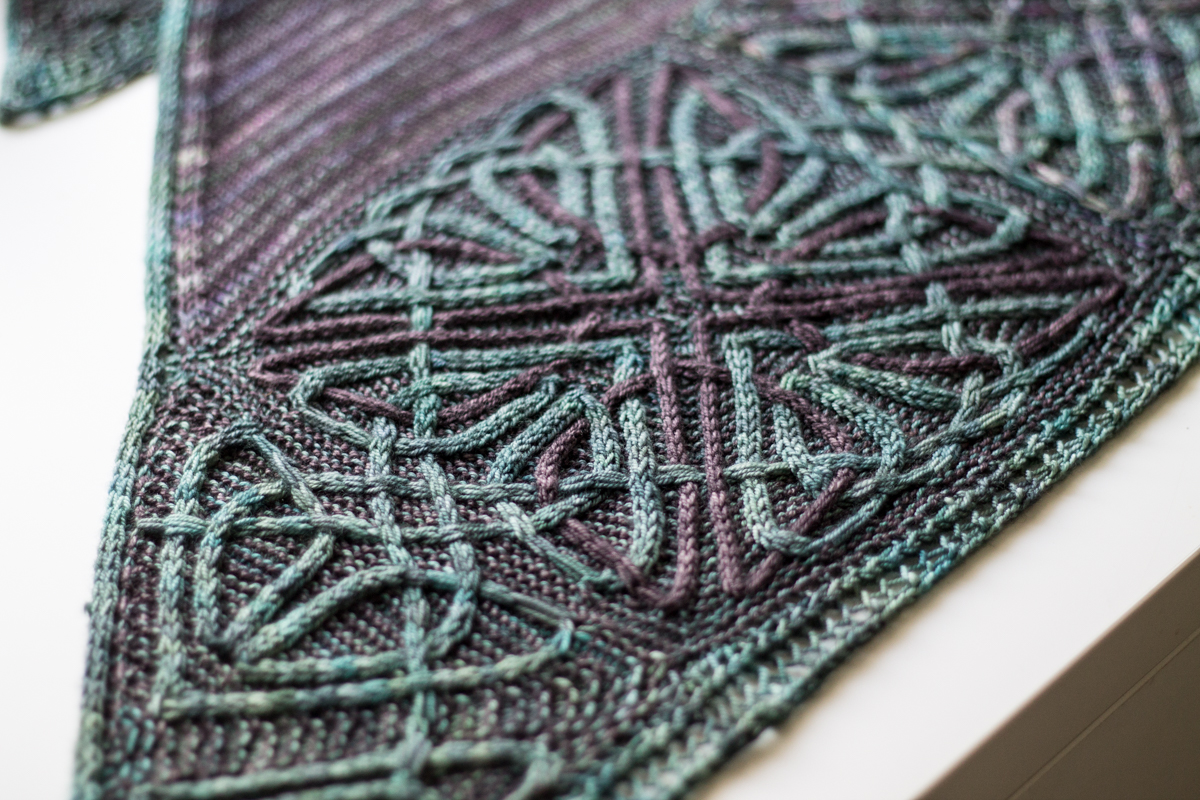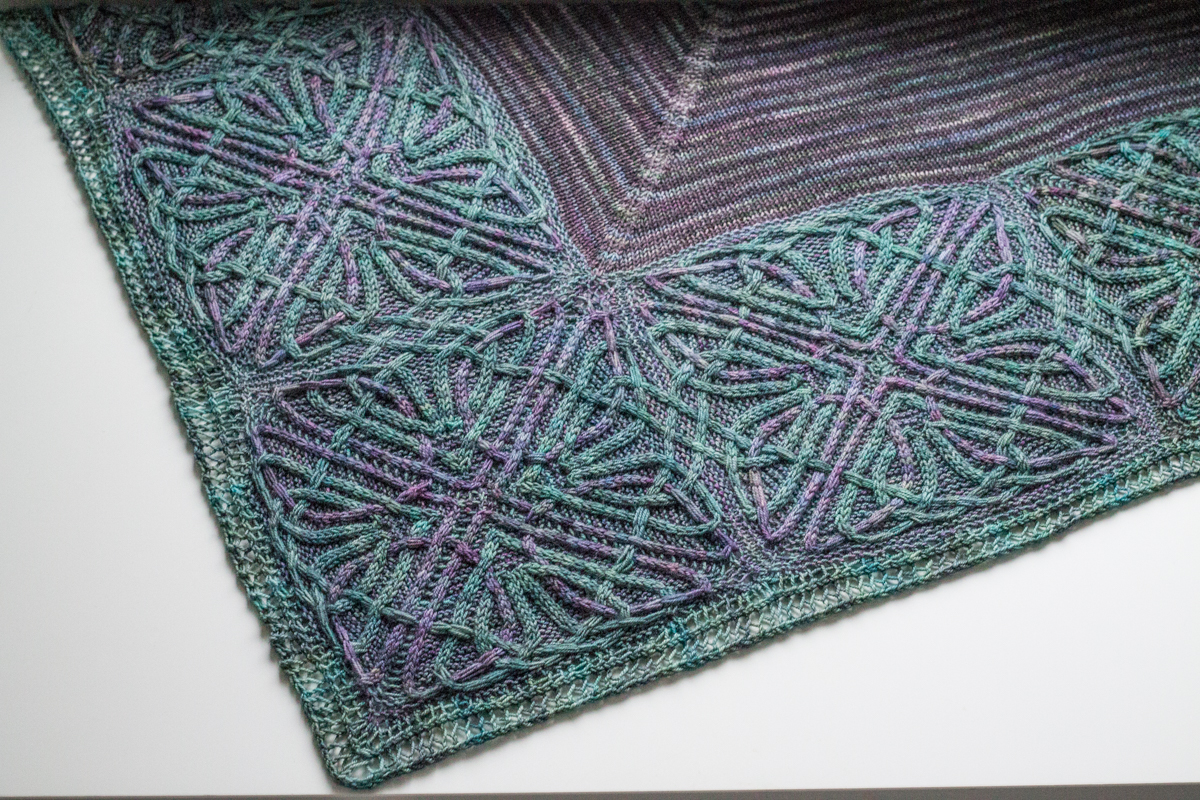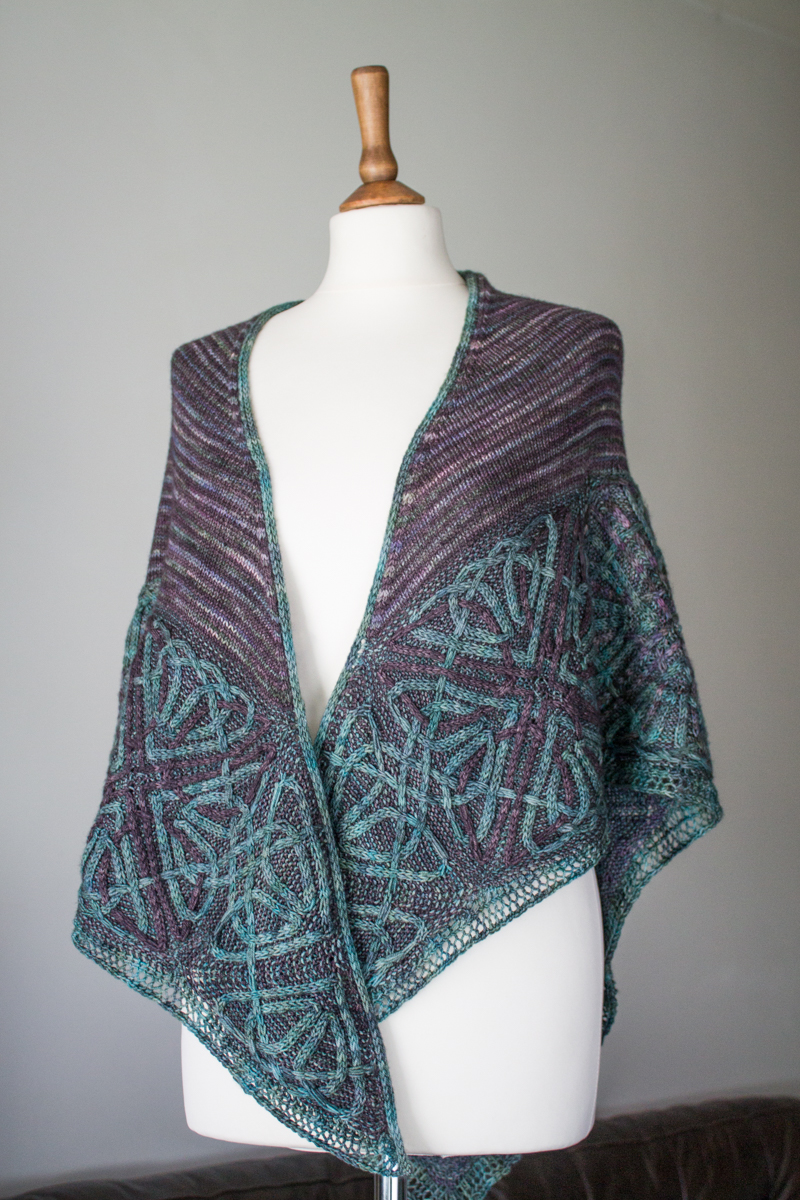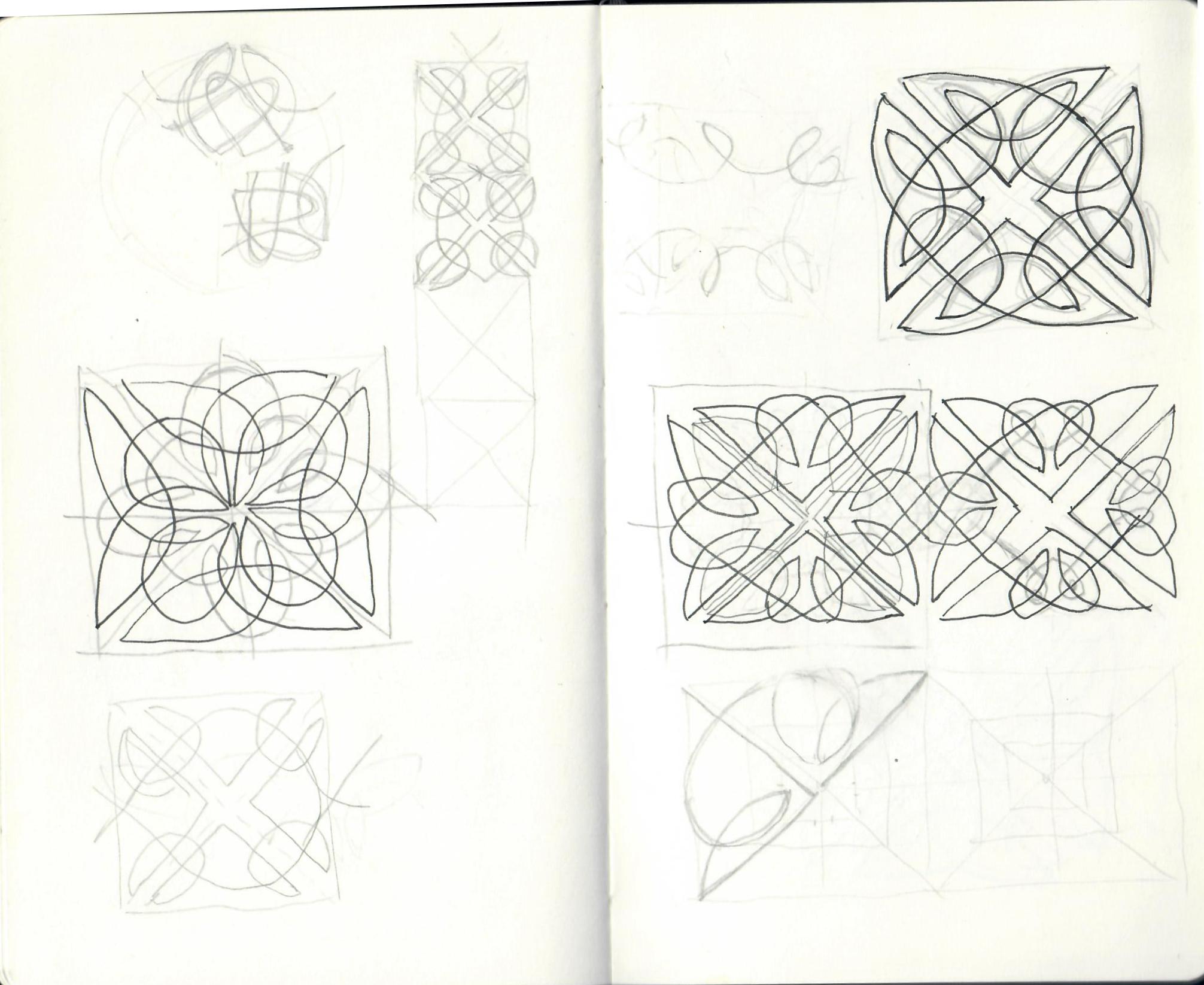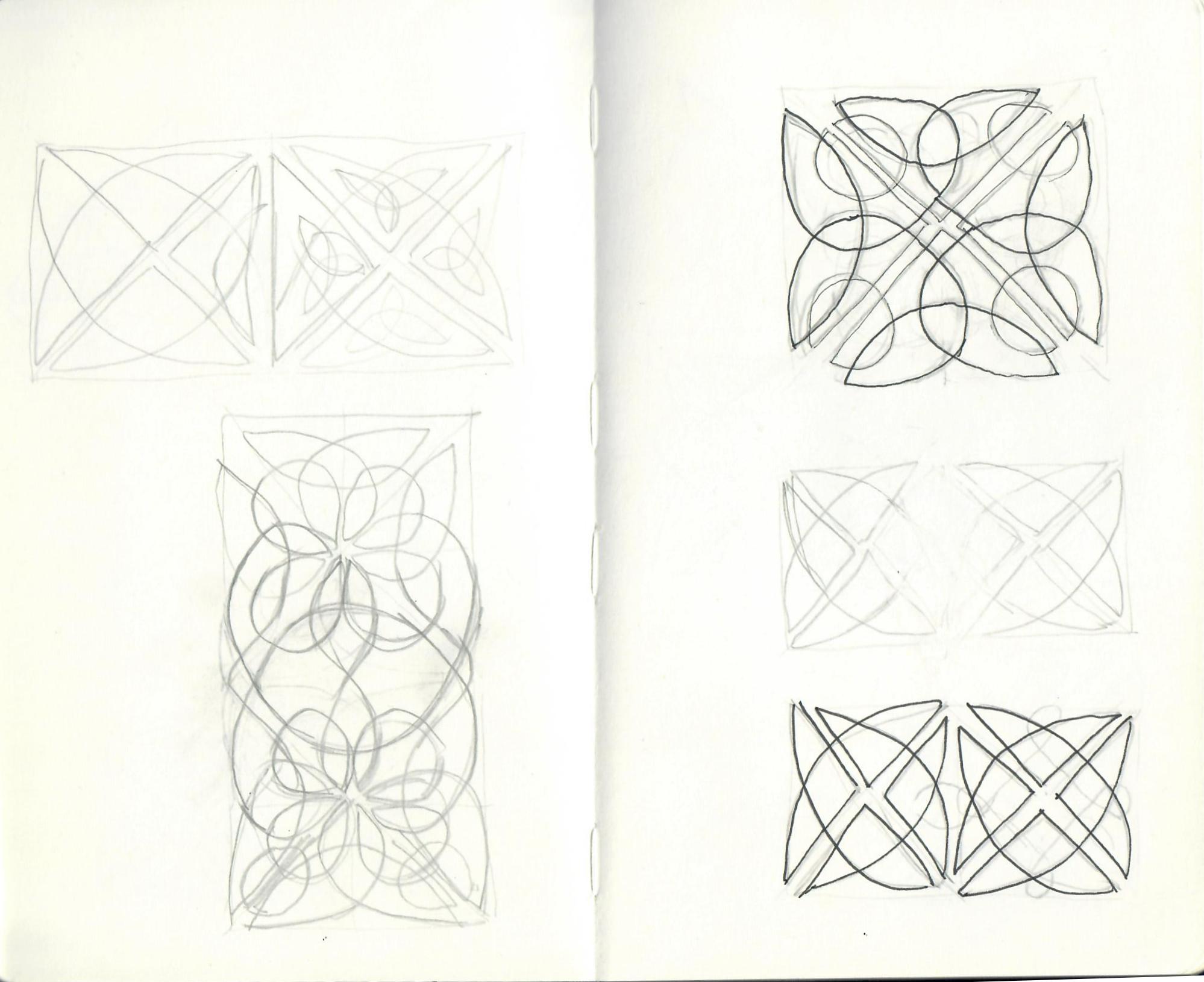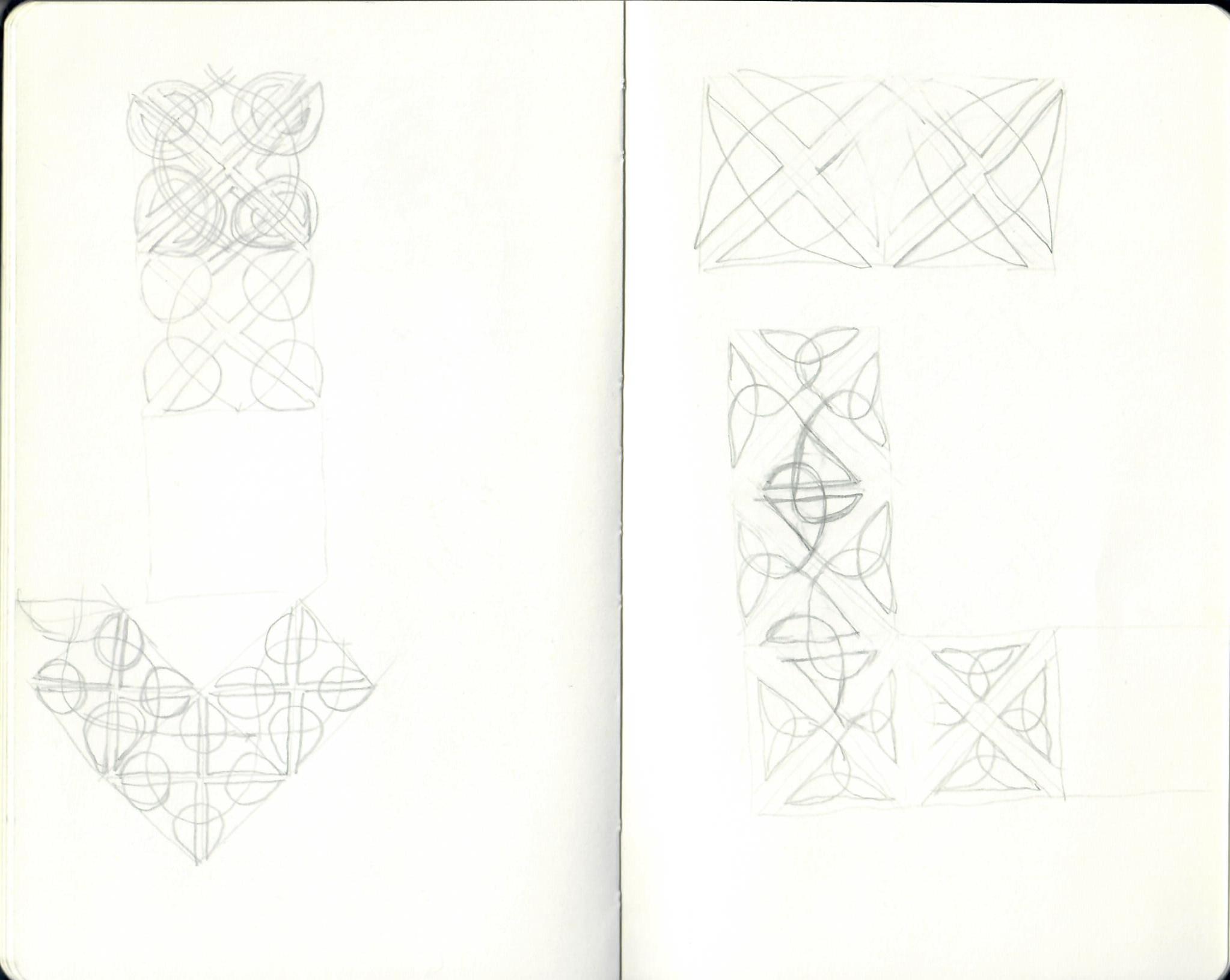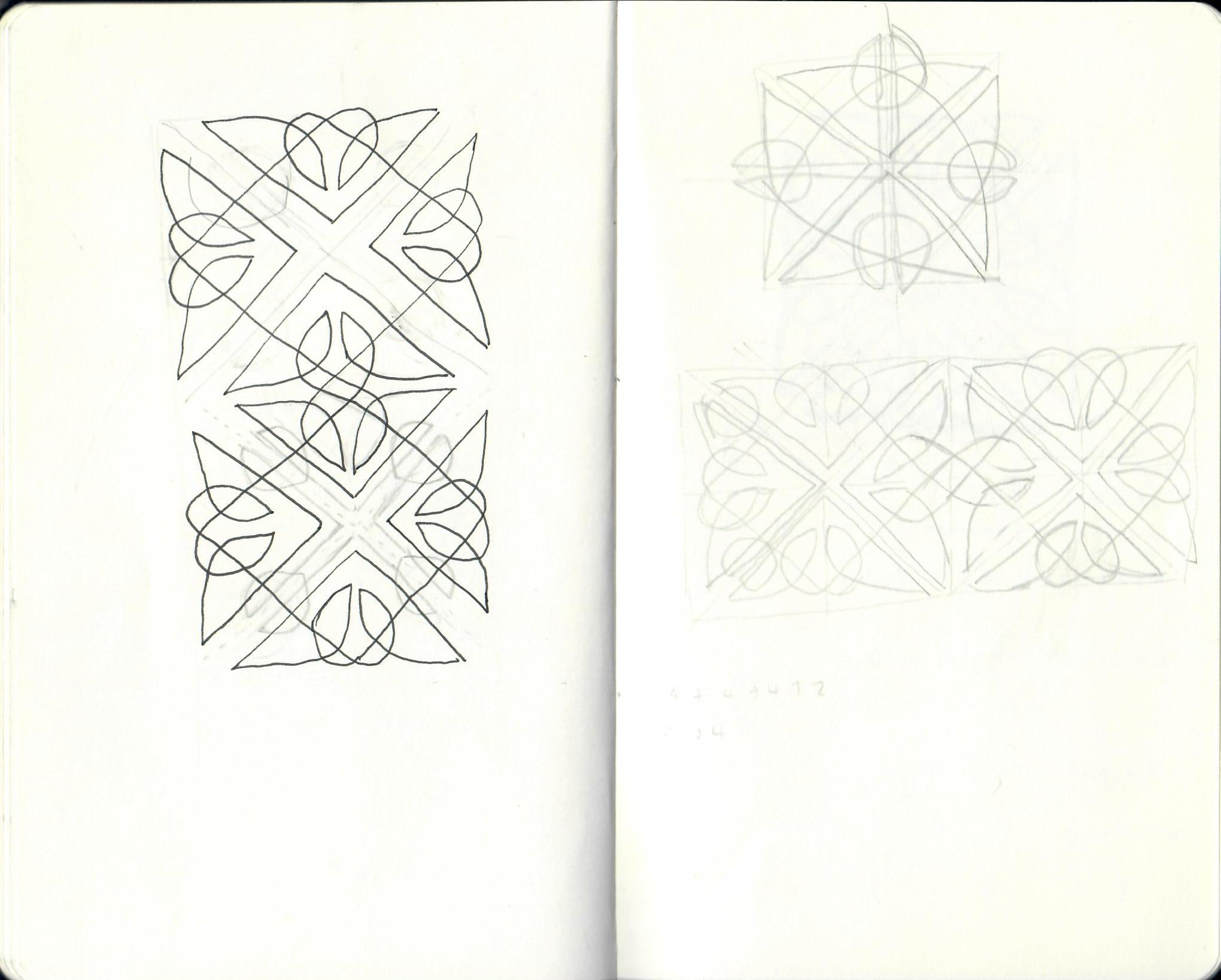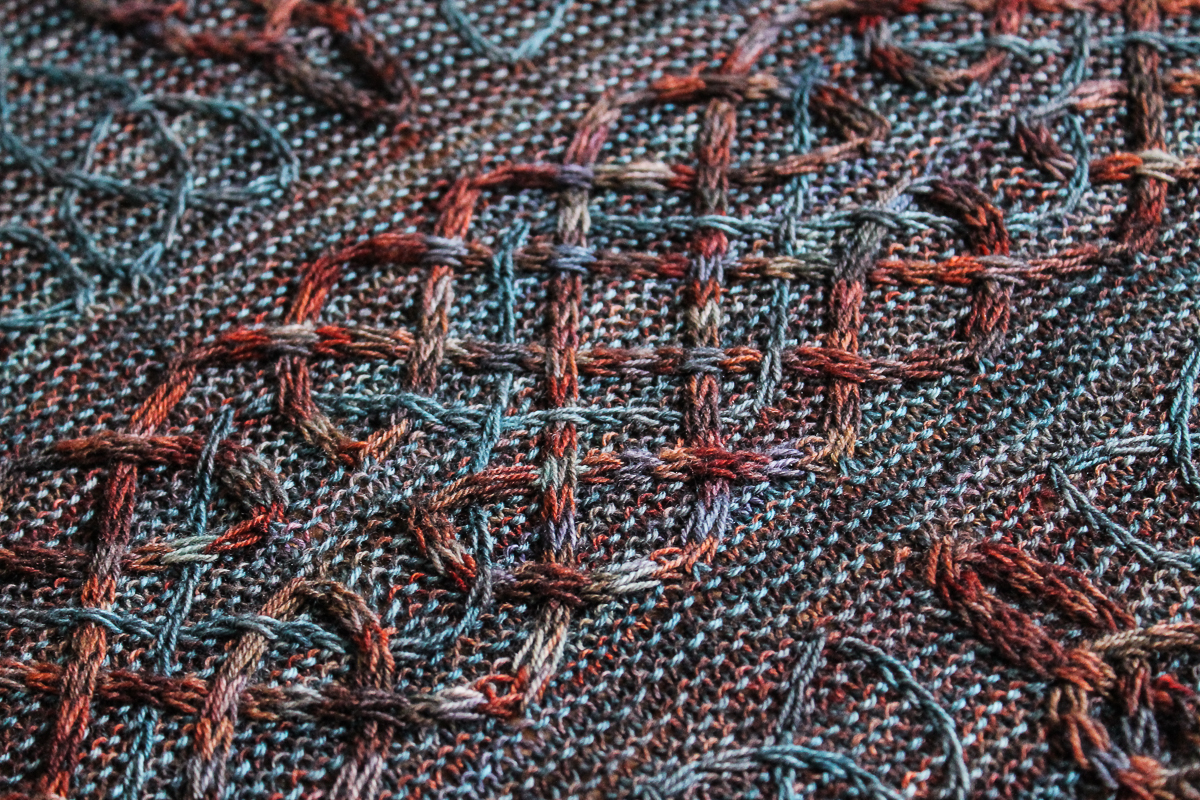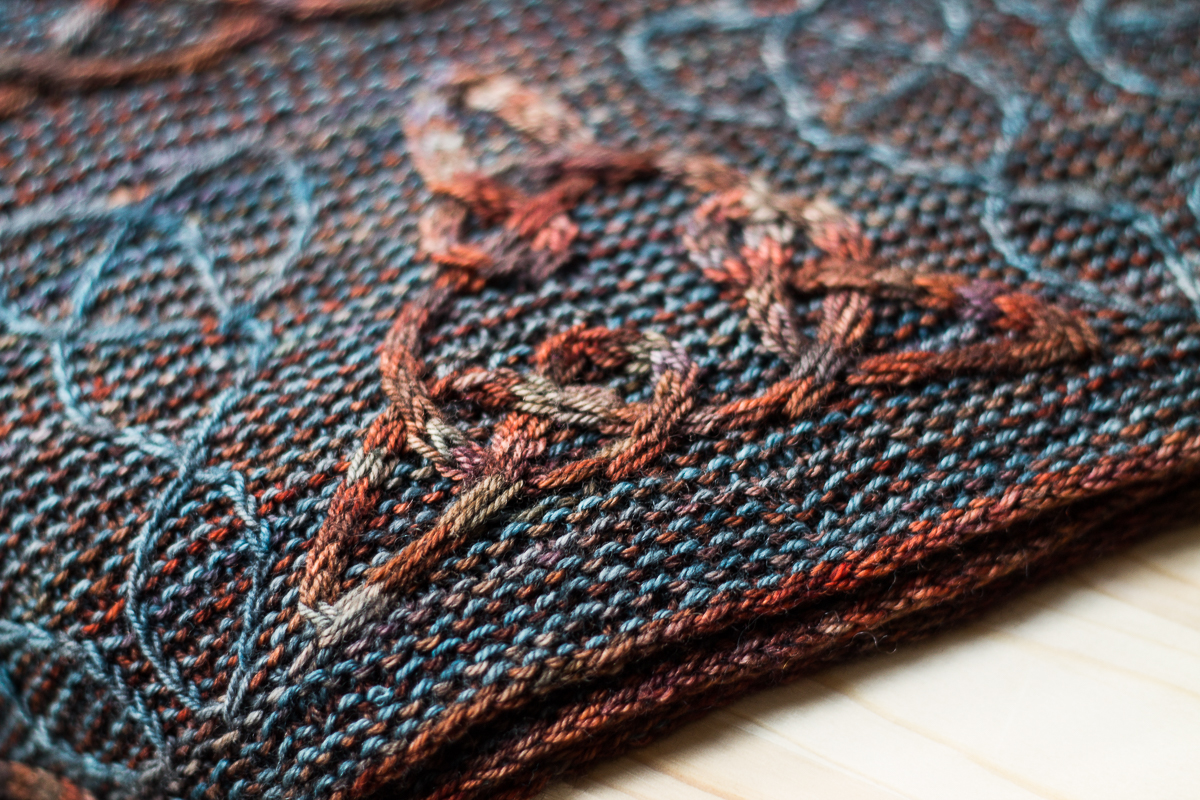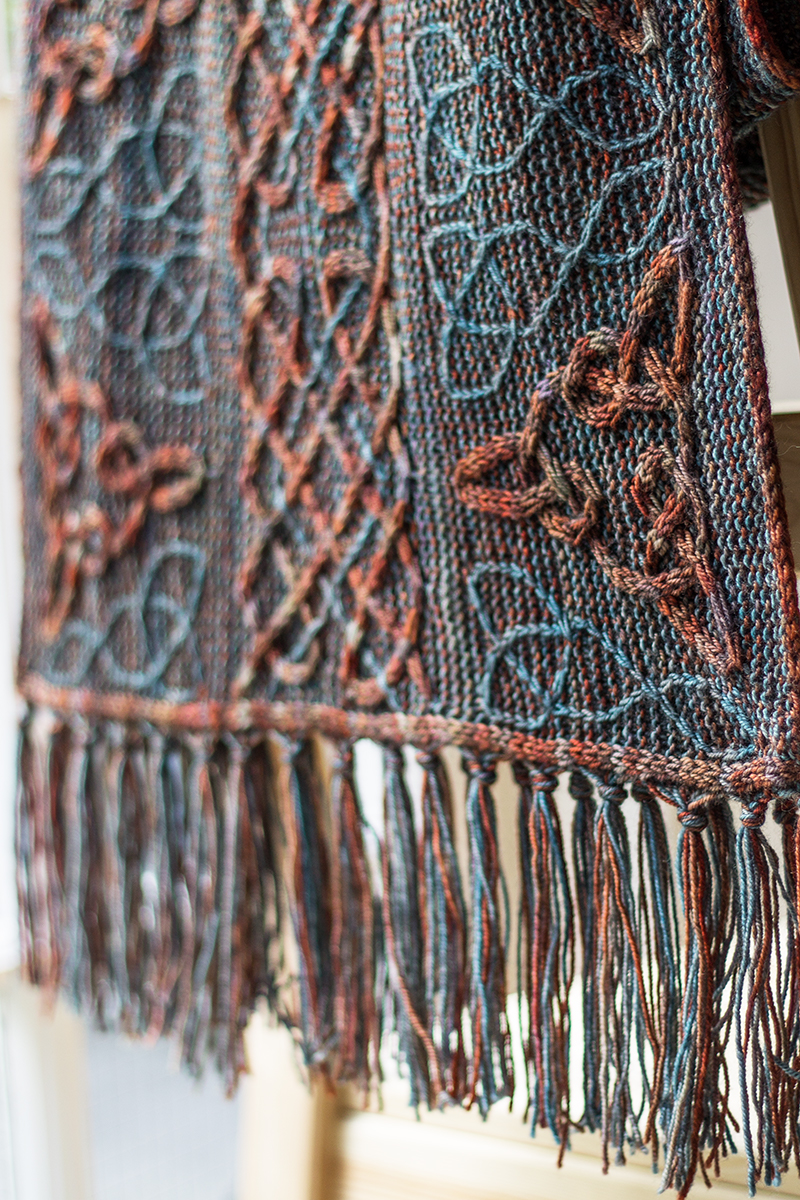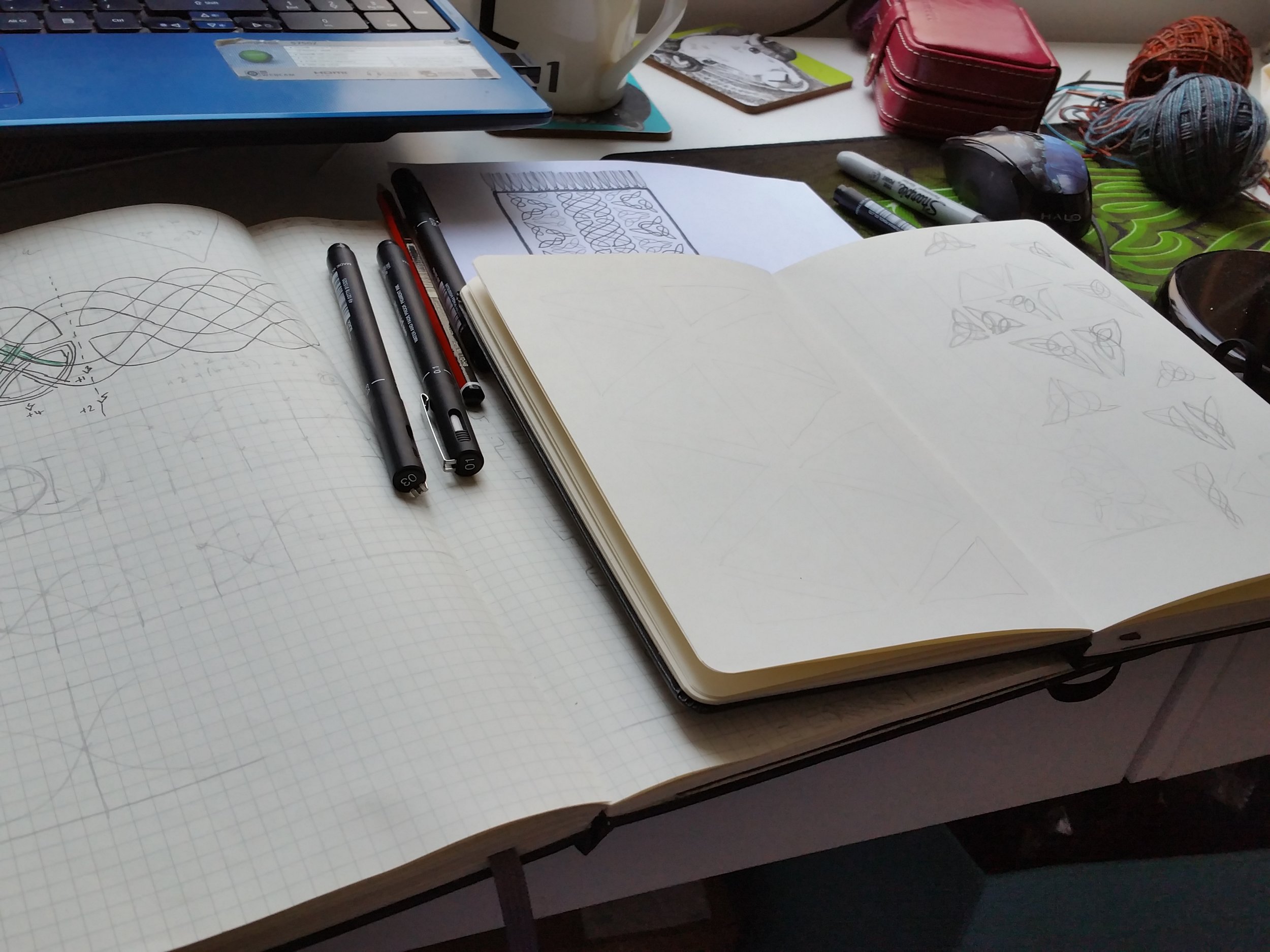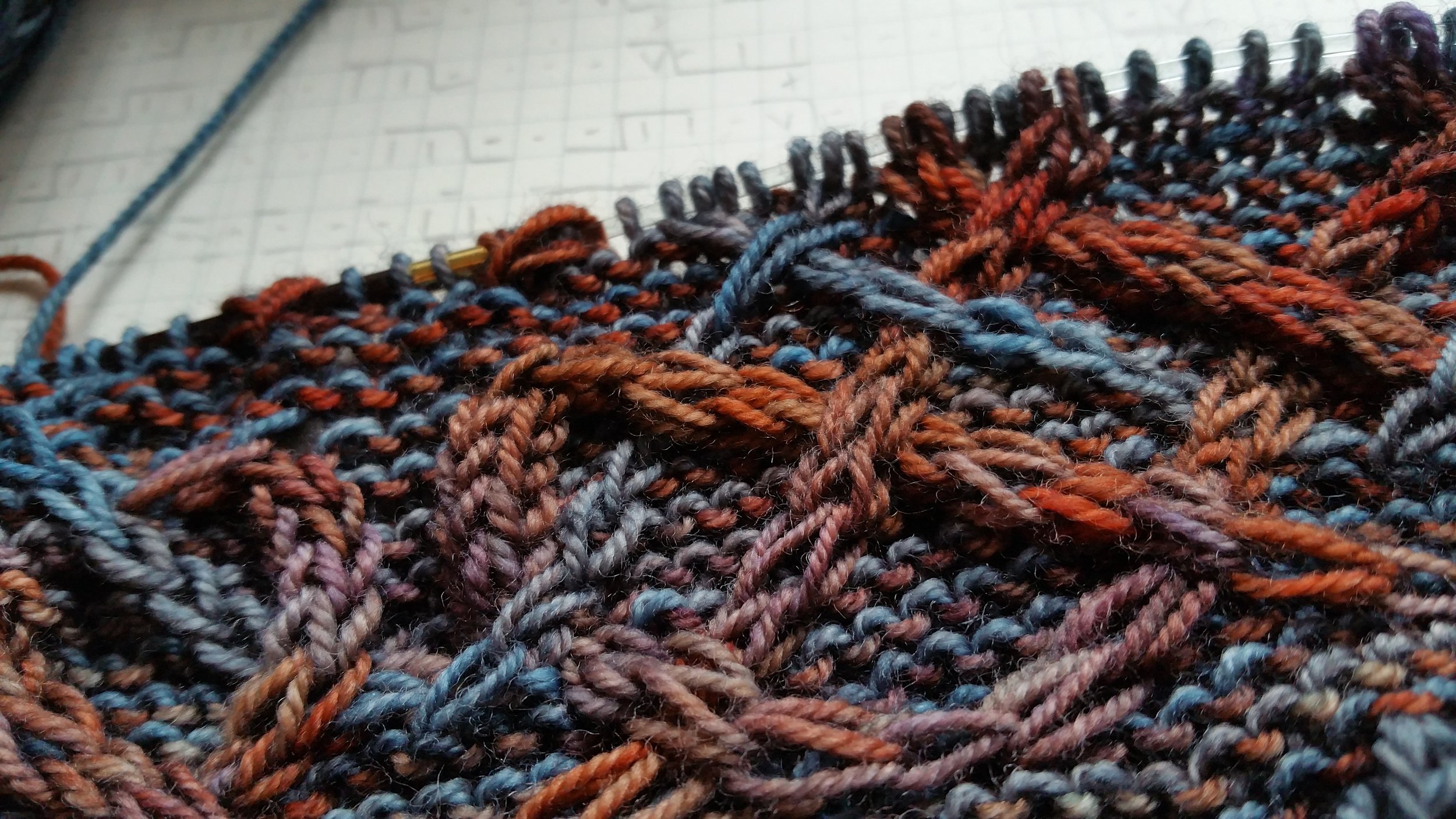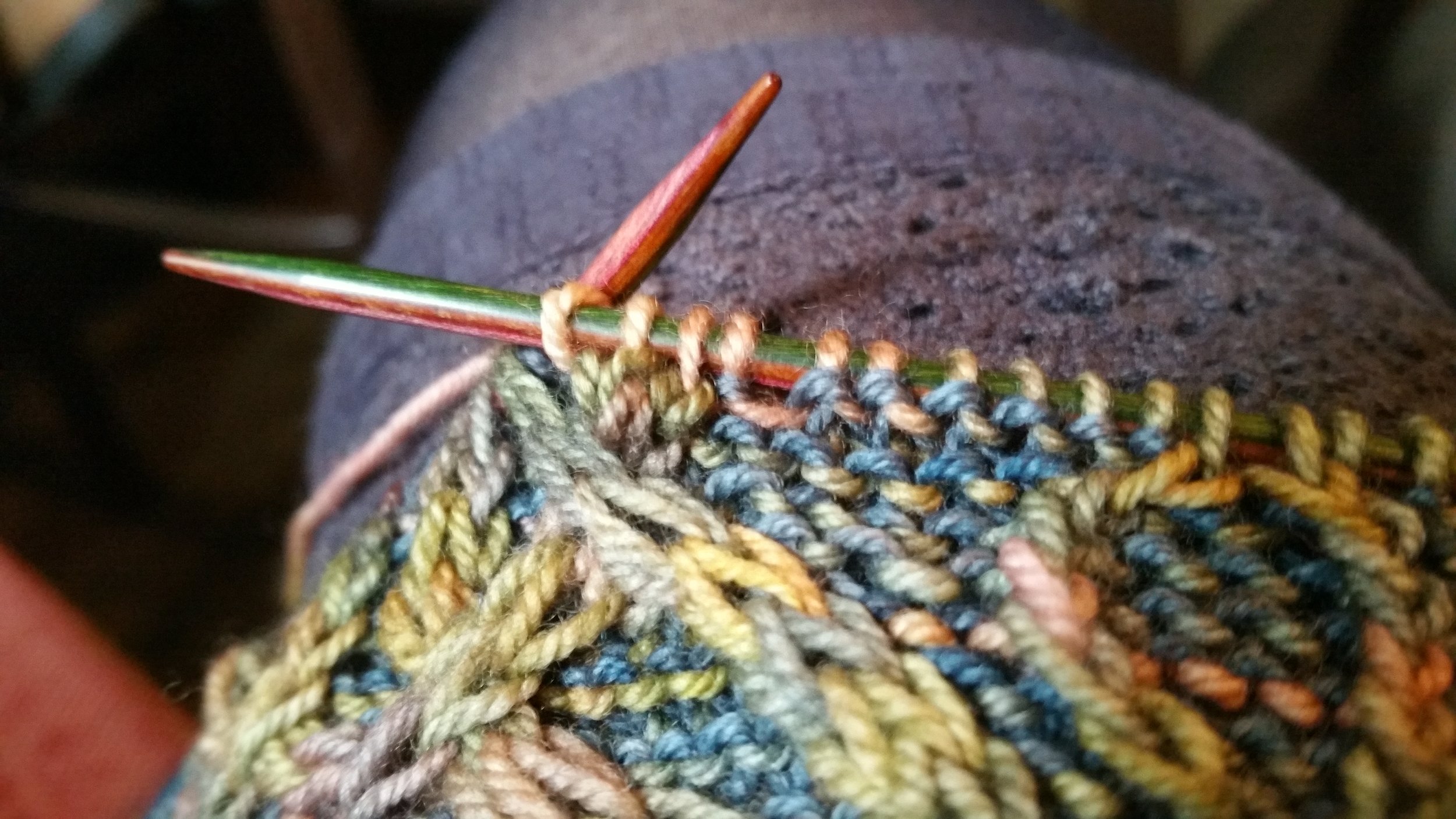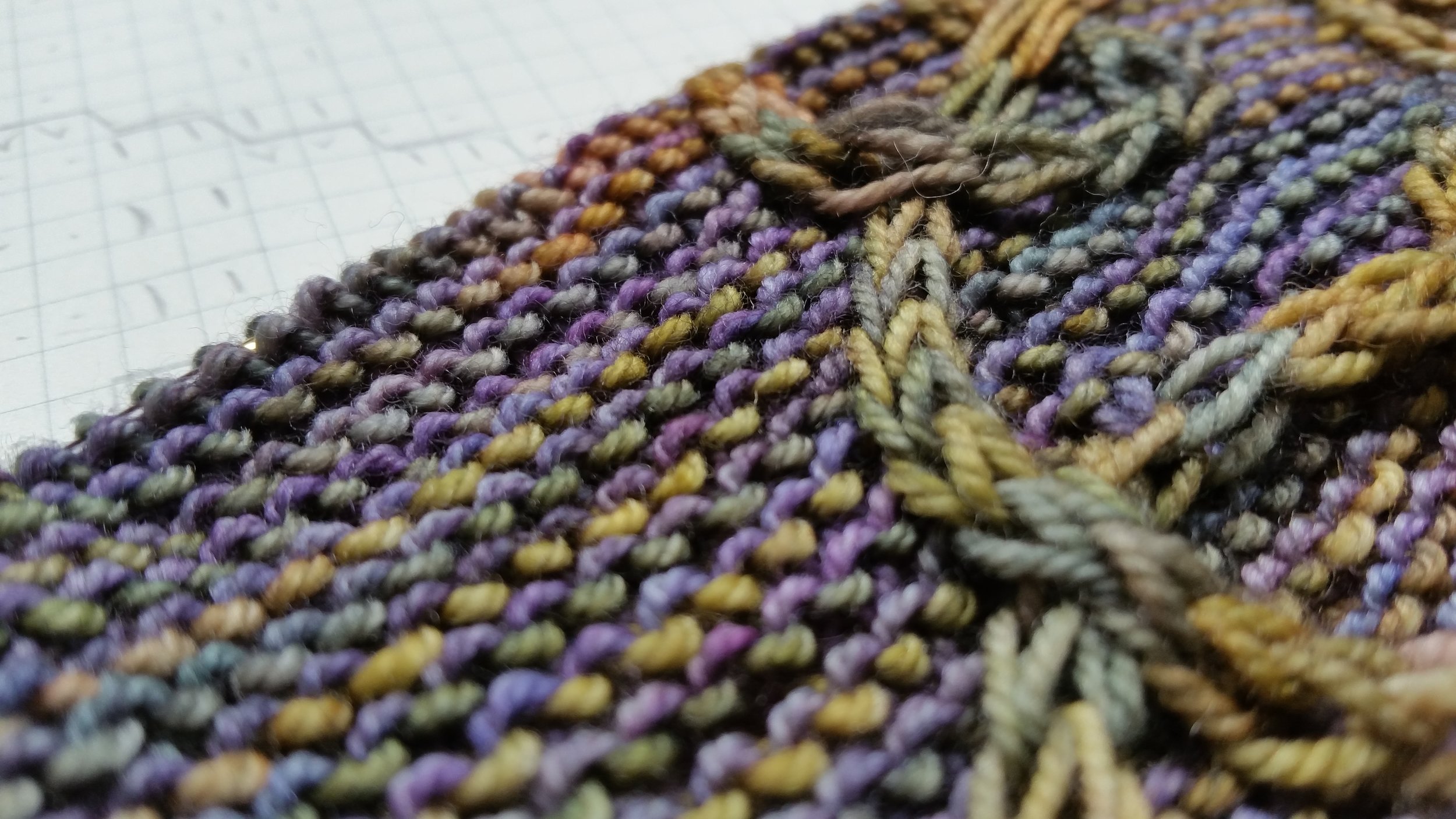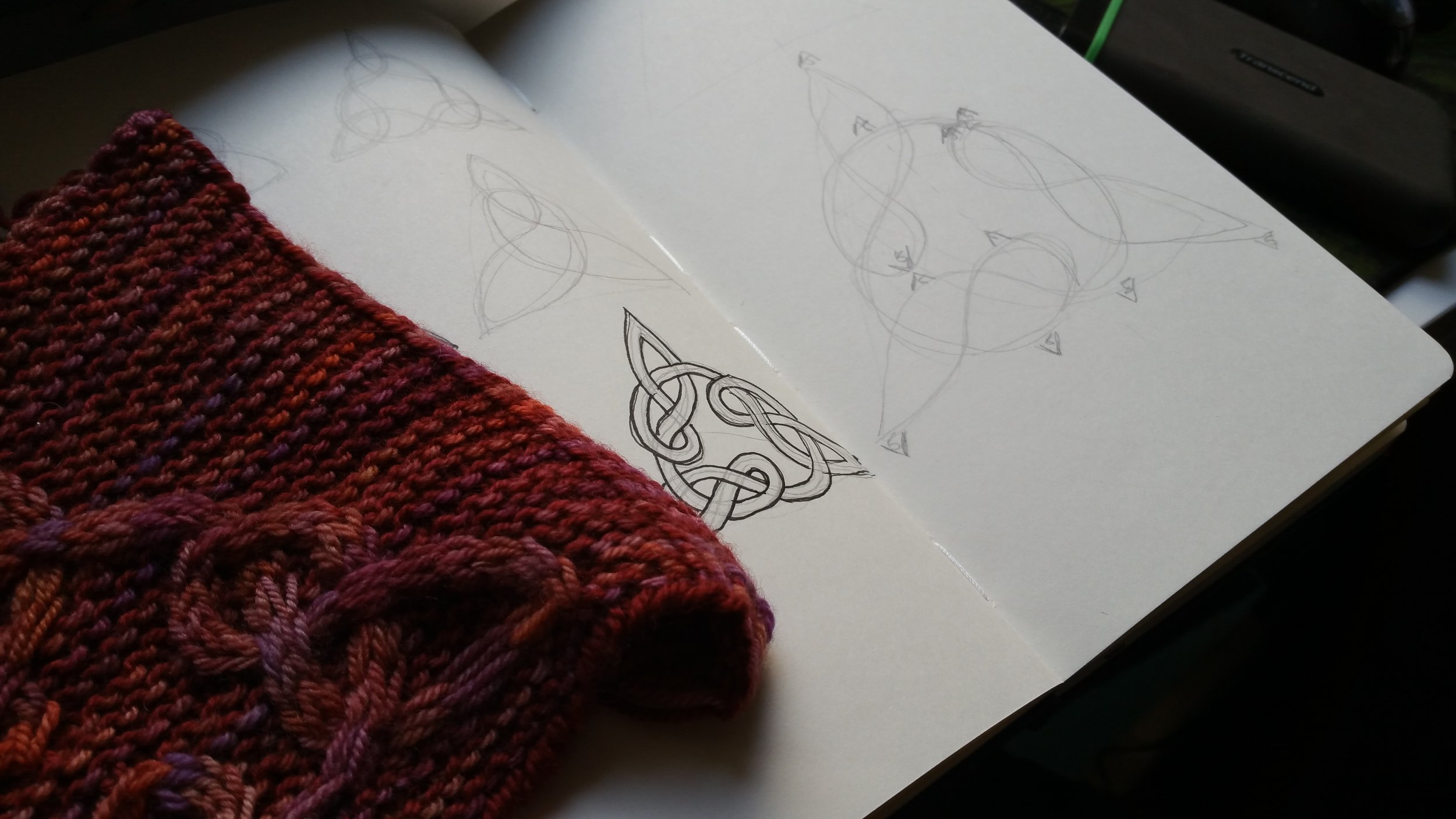I realised that I could make the cable pattern flow all the way across the border if I alternated centre-out and centre-in squares. This helps to avoid the half-stitch jog (illustrated by Joni Coniglio) that will occur if you try to graft/pick up and knit stitches from pieces of knitting where the direction of knitting is opposite. Alternating centre-out and centre-in means that the direction of knitting across the squares, at the edges, is always maintained and so the cable flow perfectly. This picture probably shows it more clearly than I can describe:

The squares on the far left and far right are both knitted centre-out; then the live stitches at the edges have been used, along with 2 provisional cast-ons, to start the middle square which is knitted from the outside to the centre. If you look closely at the edges of the middle square, you should be able to see how the main cable (in turquoise) flows seamlessly across all of the squares.
Also, you can see in the above photo how I've used slightly different colours for the background yarn of each square; this creates a nice gradient-type effect, and is one of the fun possibilities that arises from working the border in a series of modular squares. However, I think the border would also look lovely with only one background colour (the main reason I used three was simply because I couldn't choose between them!).
This construction schematic shows the order of centre-out and centre-in squares, with the arrows showing the direction of knitting:

You may remember earlier, when I was describing the problem with using this slipped stitch technique whilst knitting flat... well, I ran into this problem when trying to design knots for the corners (the corners are the bits at either end of the border, shown in both the above and the following schematics):

I decided to only continue the main cable pattern to the corners, and drop the self-contained background cable (a sacrifice to try to keep the level of complexity down! It would have been possible to include the background cable too, but I tried knitting it myself and nearly tore my hair out, so I figured other knitters might also find it a bit frustrating). The difficulty arises because these corners need to be knitted flat (you start from the outside and work decreases inwards to make the right-angle triangle shape, rather like the body of the shawl but in miniature). So, to get the working yarn to end up in the right place so that you can change colour every row (instead of every 2 rows), you need to work 2 RS rows followed by 2 WS rows. This makes some WS cables necessary, but I was able to write the pattern in such a way that these are kept to a minimum.

After the border has been knitted, and the body picked up along the edges and worked upwards with decreases towards the neck edge, the top edge is finished with an i-cord cast-off and the outer border edge is finished with a lace edging (both visible in the above photo).

After spending so long on perfecting the design of this shawl, I felt a sense of melancholy (mixed with a bit of relief!) when I cast off the last stitch. It always feels a bit strange to finish such a large and complex project, but I'm looking forward to diving into my next (and final) Illuminated Knits design.
I will be exhibiting the sample of Durrow (along with most of my other knitted samples!) at the upcoming Edinburgh Yarn Festival (March 10th and 11th). I'll be at stand J1 in the marketplace, so please come and say hi if you see me!
Save
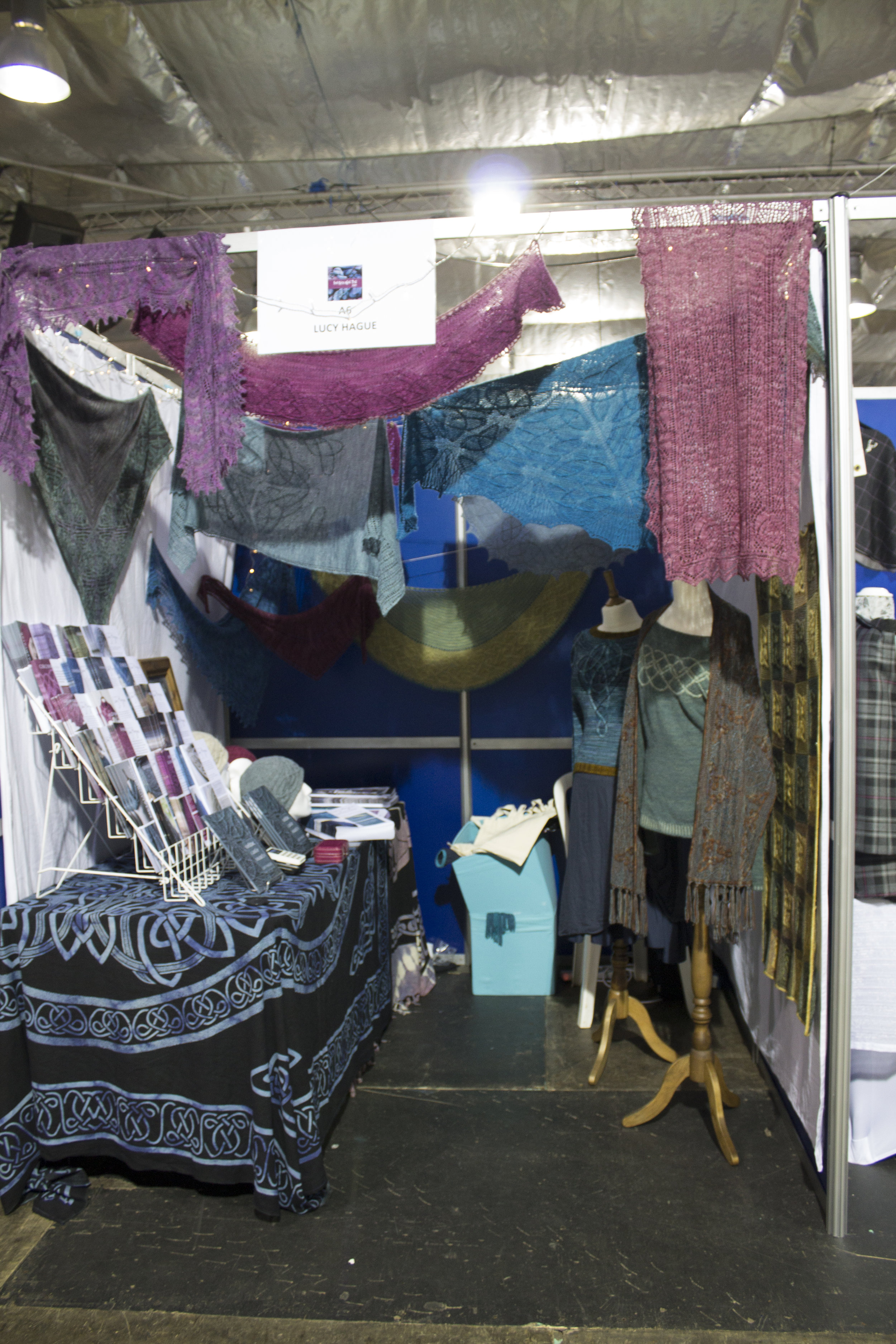
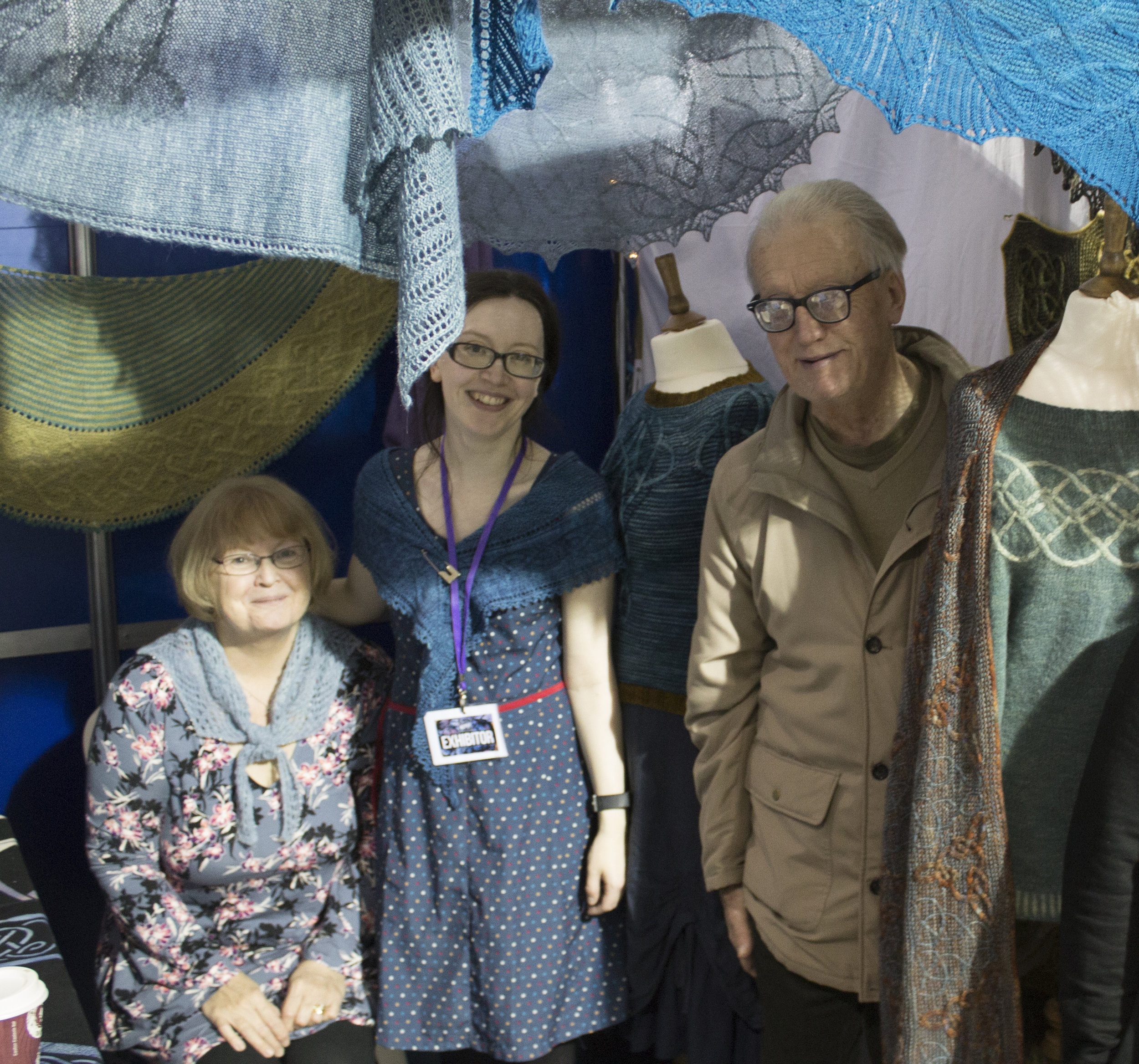
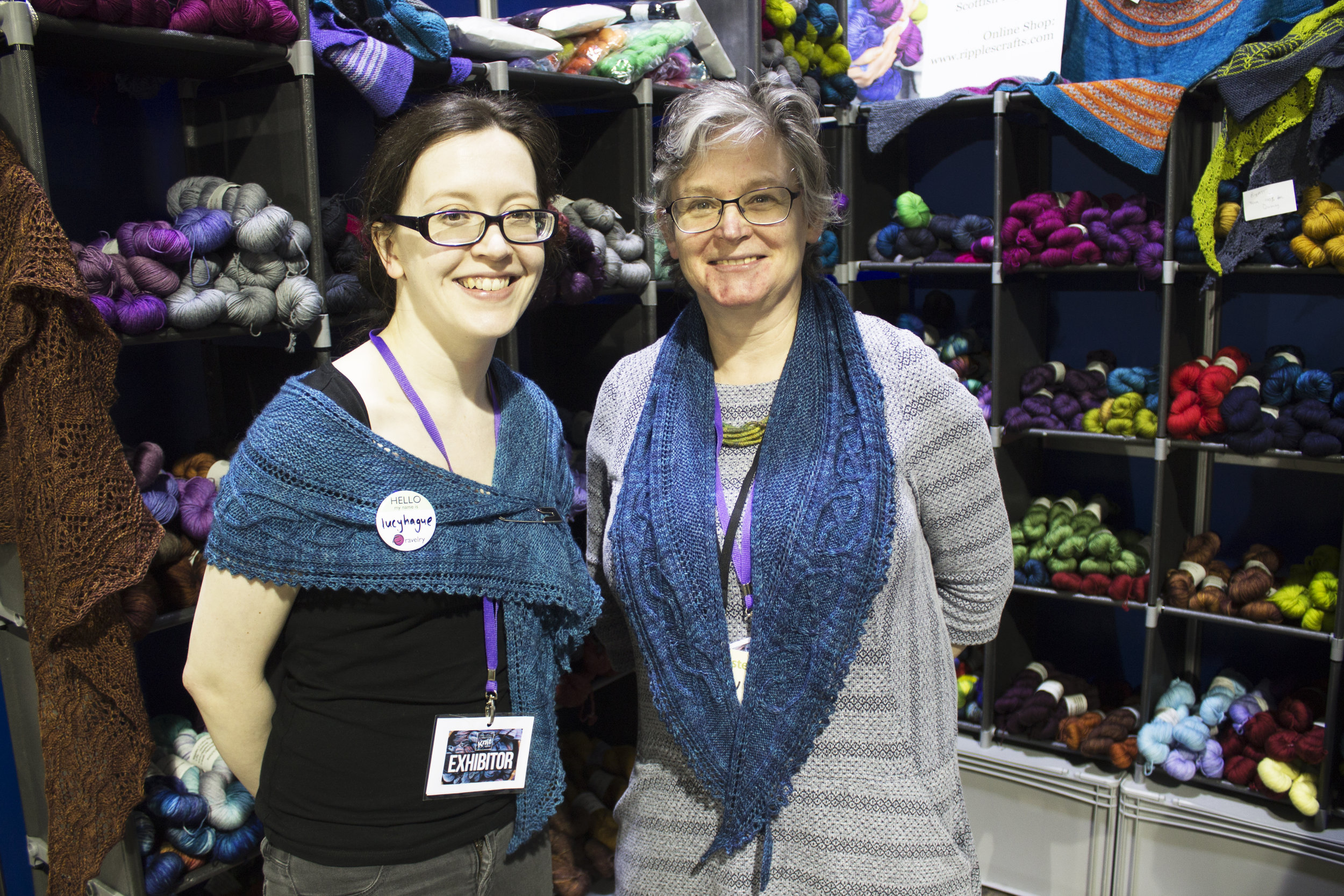
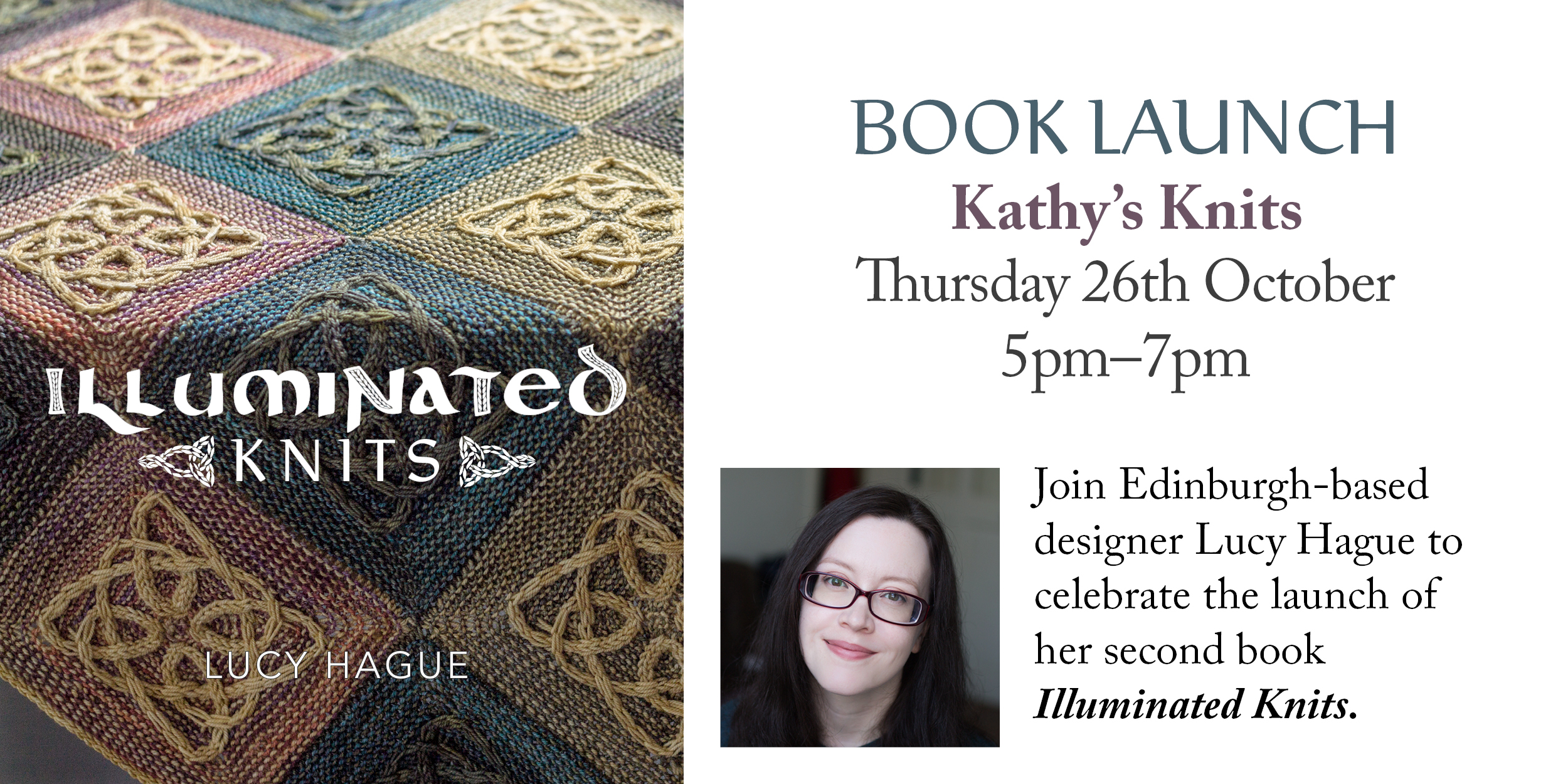
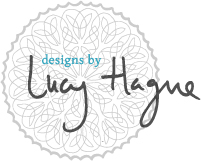



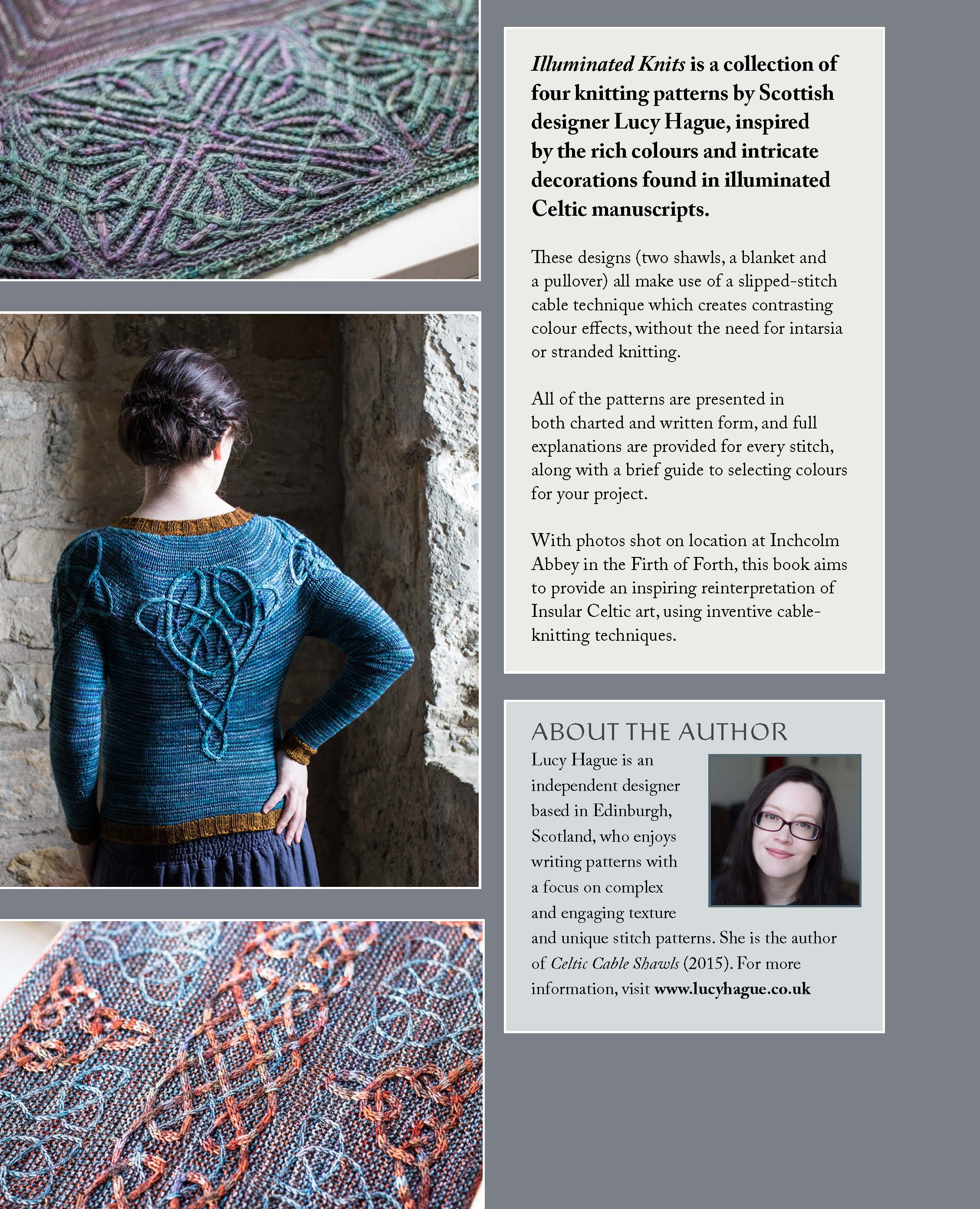
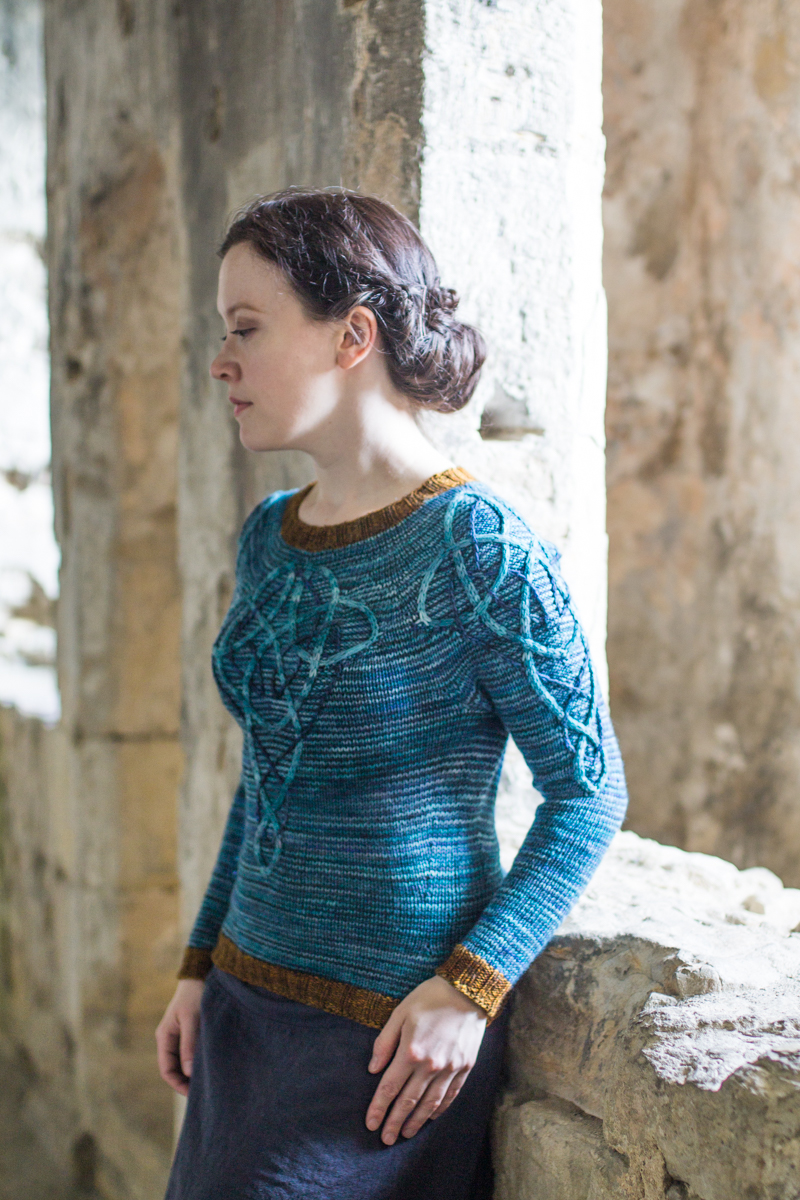



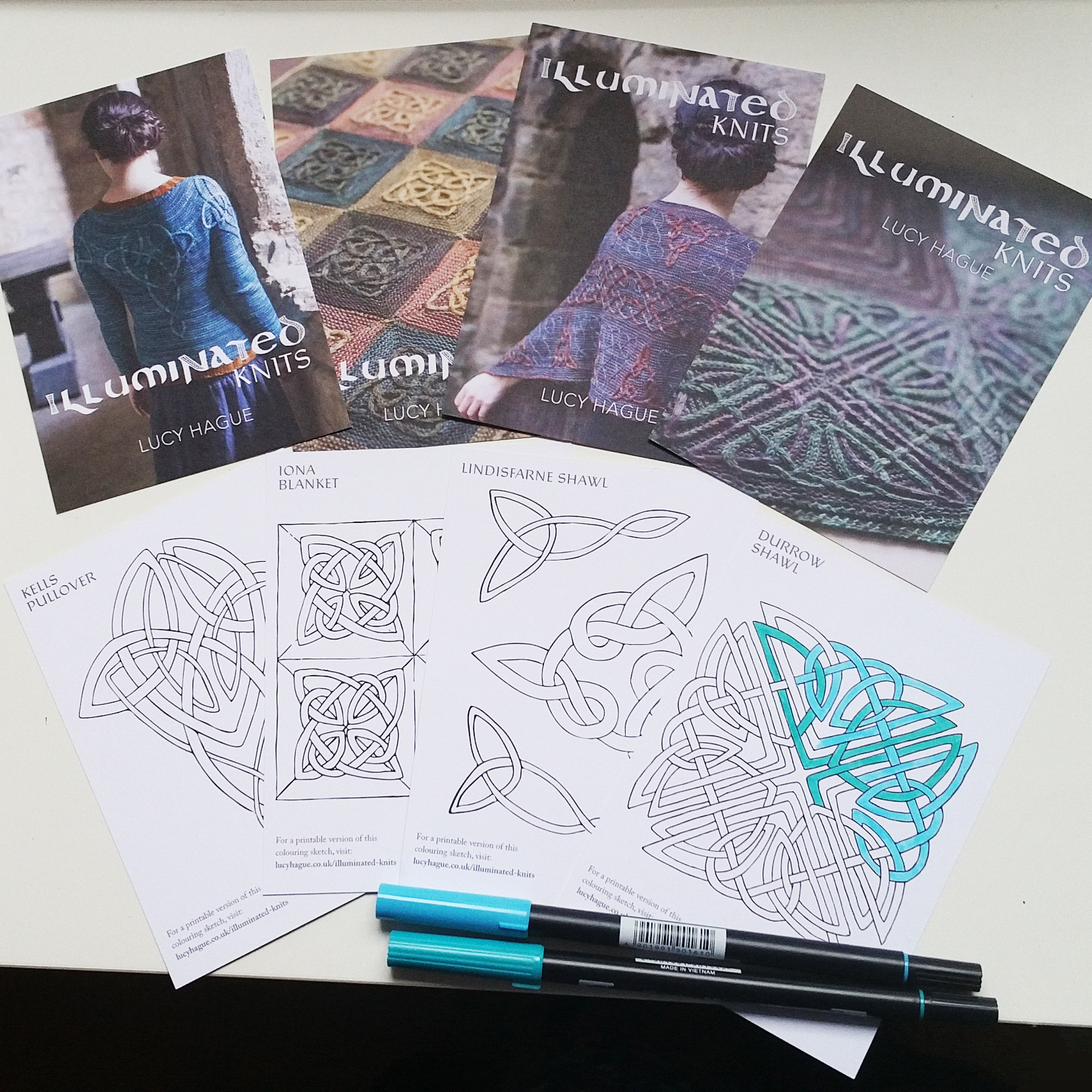
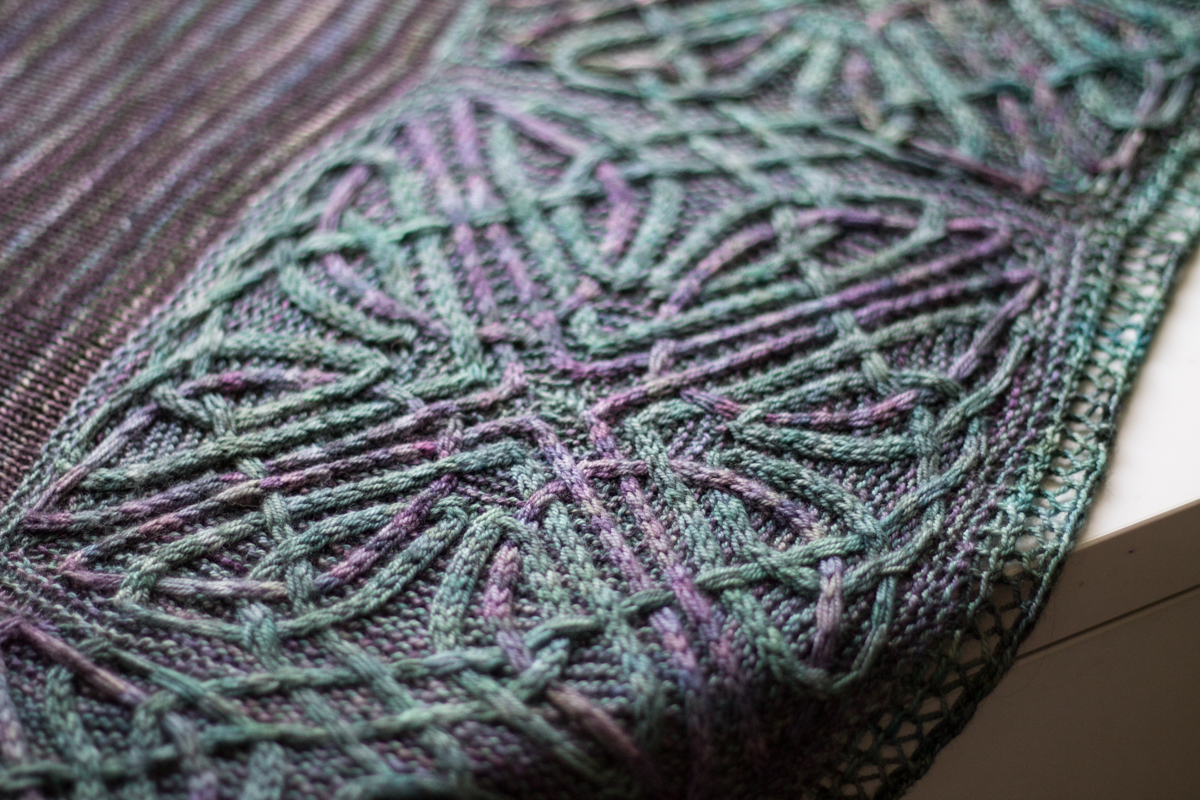 It's been a while in the making, but I'm pleased to announce the third design in the
It's been a while in the making, but I'm pleased to announce the third design in the 